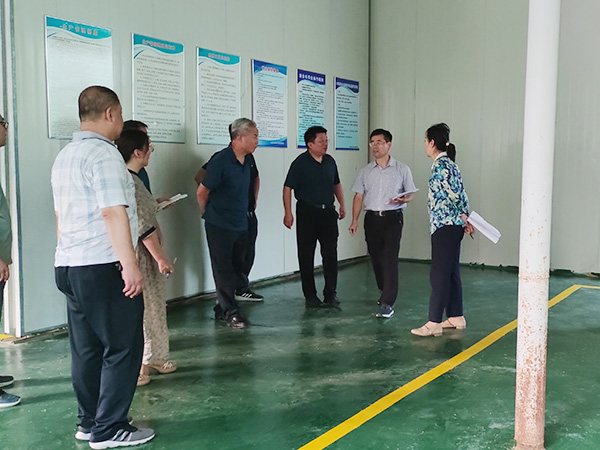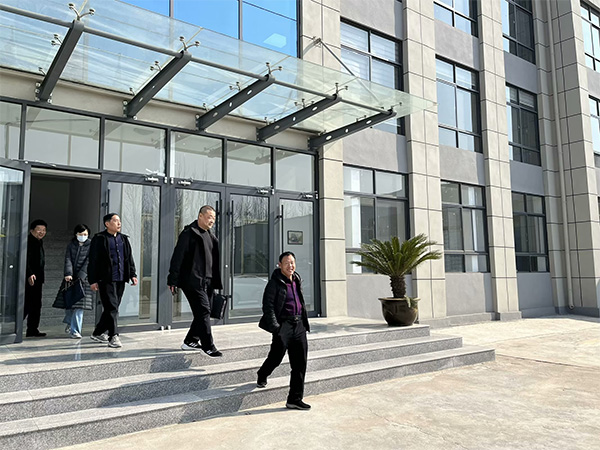Chickens have two ways of dissipating heat: 1. They dissipate heat into the surrounding air (sensible heat dissipation), and 2. They dissipate heat through the evaporation of moisture in their respiratory system (latent heat dissipation). Sensible heat dissipation is easy to understand. The body temperature of a chicken is higher than that of the surrounding air, so heat will be dissipated into the surrounding air. The lower the ambient air temperature, the greater the heat dissipation, and the higher the ambient air temperature, the smaller the heat dissipation.
When a chicken breathes, the moisture in its respiratory tract evaporates, and heat is dissipated from its body, similar to the cooling principle of wet curtain evaporation. The heat dissipation of chicken respiration evaporation is related to the relative humidity of the air it breathes. The lower the relative humidity, the greater the evaporation and corresponding heat dissipation. On the contrary, the higher the relative humidity, the smaller the evaporation rate and the corresponding heat dissipation. From the first day of birth, chickens use these two methods to dissipate heat and maintain normal body temperature.
How much heat will there be? At 25 ℃, a 2.26kg chicken can generate 17.58W of heat, which is equivalent to the heat dissipation of a 25W incandescent lamp. When the relative humidity is 50%, approximately 10.5W of heat (60%) will be evaporated and dissipated through the respiratory system, while 7W of heat will be dissipated into the surrounding air. An adult in a stationary state will generate 100 watts of heat (1/7 of the heat produced by a chicken per unit weight). Only 28% of the heat is dissipated through the respiratory evaporation system and skin evaporation, while the remaining 72% of the heat diffuses into the surrounding air. Compared to chickens, humans are far less reliant on evaporation for cooling. So our sensitivity to high humidity is lower than that of the chickens we raise.
25 ℃ is not a very hot temperature for most people. But for chickens, if the relative humidity is high, it will be very uncomfortable. When the humidity increases from 50% to 70%, the total heat dissipation decreases by 25%. If it rises to 90%. The total heat dissipation has decreased by nearly 35%. This level of reduced heat dissipation can lead to a significant increase in chicken body temperature and a decrease in production performance.
This is the problem that producers have to face. During hot weather, we use evaporation cooling to lower the temperature inside the house and increase the heat dissipation of chickens into the air. The disadvantage is that this cooling will increase the relative humidity. For every 1 ° F decrease in temperature, the relative humidity of the air will increase by 2.5%. Despite the decrease in air temperature, the increase in relative humidity reduces the ability of chickens to cool themselves by evaporating heat through their respiratory system. However, wind speed can partially offset the reduced heat dissipation caused by increased humidity. The increase in wind speed enhances the heat dissipation from the chicken body to the surrounding air, reducing the chicken's dependence on respiratory heat dissipation. The higher the wind speed, the higher the heat dissipation of the chicken body, and the lower the demand for respiratory heat dissipation, thereby reducing the impact of relative humidity. There is no wind speed in the chicken coop, and the use of wet curtains to cool down is a potential risk. As the wind speed increases, the impact of relative humidity on the chicken flock will decrease. The key is that when air flows through the chicken body, the wet curtain is a very good cooling method. When the humidity is high and the wind speed is low, the chicken flock will experience heat stress at surprisingly low temperatures. At this point, the chicken coop may be cool for you, but remember that a chicken is much more sensitive to high humidity environments than you are.
Before using the wet curtain system, please confirm that there are sufficient fans running to counteract the harmful effects of increased humidity caused by the wet curtain. For older chicken flocks, it is usually necessary to have most of the fans in the coop running before using the wet curtain. We not only need to offset the negative impact of high humidity caused by wet curtains. Moreover, due to the thick feathers covering the flock of older chickens, the space between each chicken is limited, requiring a higher wind speed to eliminate the excess heat emitted by their bodies.
Although wind speed is a very effective method of removing excess heat from chicken flocks, the smaller the temperature difference between the air in the chicken coop and the chicken body, the less heat is removed from the chicken body. Farmers need to utilize wind speed and wet curtains in hot weather to keep their flocks comfortable and productive. But please remember that the first thing that reduces the perceived temperature of the chicken flock is the wind speed, followed by the wet curtain.
During the hot season, broiler chickens are inevitably subjected to heat stress, which leads to a significant increase in their water intake and changes in intestinal osmotic pressure, resulting in an imbalance of the microbiota;
During the hot and humid season, mold and mycotoxins can seriously damage the integrity of the intestinal mucosa, leading to a series of intestinal problems.
Abuse of antibiotics, especially broad-spectrum antibiotics, can kill harmful and beneficial bacteria, but the harmful bacteria recover faster, leading to their dominance.
Here we recommend the enzyme health product "Enzyme Bacteria Combination", which is mainly composed of Streptococcus pentosus and glucose oxidase.
Streptococcus pentosus is a beneficial lactic acid bacterium that can quickly replenish a large amount of beneficial bacteria in the body when the intestinal microbiota is imbalanced, and quickly occupy space, achieving the goal of "treating bacteria with bacteria"
Glucose oxidase can not only inhibit the reproduction of fungi, but more importantly, it can directly decompose fungal toxins.
So the Enzyme Health product can quickly restore the imbalance of gut microbiota caused by various reasons, while also solving the current problems of mold and mycotoxins, making it the killer of gut problems.
In addition, the product contains a large amount of amylase, lipase, amylase, and mannanase, which can promote the digestion and absorption of feed and reduce the feed to meat ratio.
It is a drinking water product that can greatly save manpower and material resources compared to mixing materials.
-
 Weier Biotechnology Company successfully passed the registration for the addition and renewal of the new production license for feed additives
Weier Biotechnology Company successfully passed the registration for the addition and renewal of the new production license for feed additives -
Shandong Weier Biotechnology Co., Ltd. was established (formerly known as Tai'an Yifeng Biotechnology), specializing in the research and production of animal microecology.
-
 Director Wang Ping and other leaders from the Animal Husbandry Bureau came to our company for safety guidance
Director Wang Ping and other leaders from the Animal Husbandry Bureau came to our company for safety guidance -
The R&D center of Shandong Weier Biotechnology Co., Ltd. has developed its own proprietary intellectual property products - the shell red pigment series products.
Website Registration Number:鲁ICP备2024111636号-1
Address:Heishibu Village, Fangcun Town, Daiyue District, Tai'an City, Shandong Province, China







